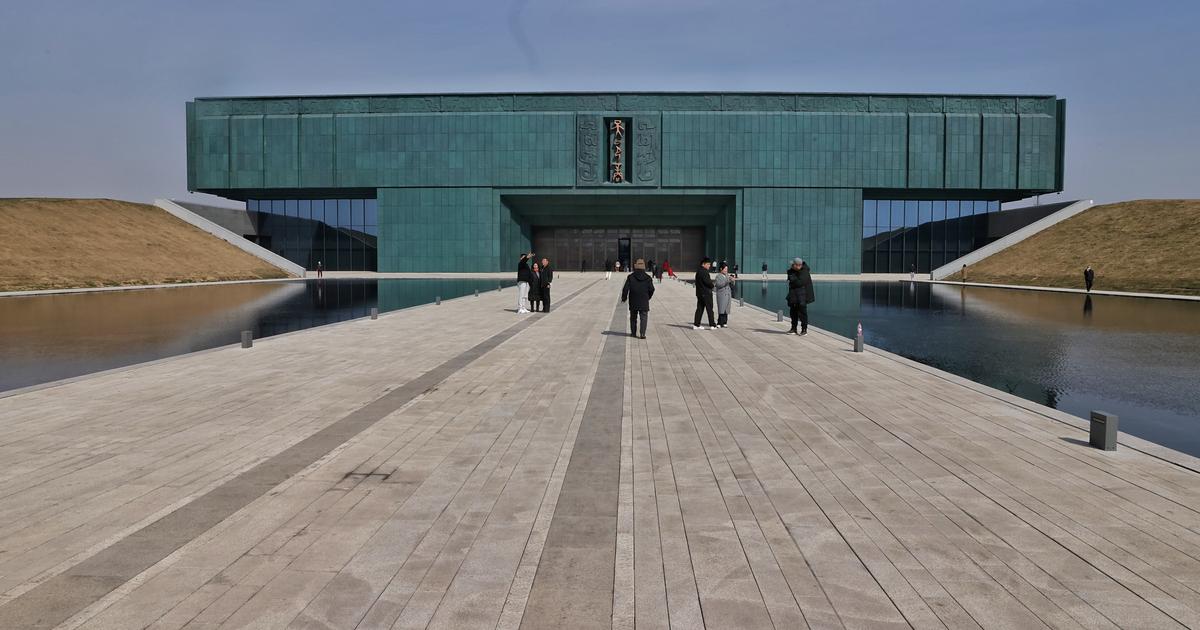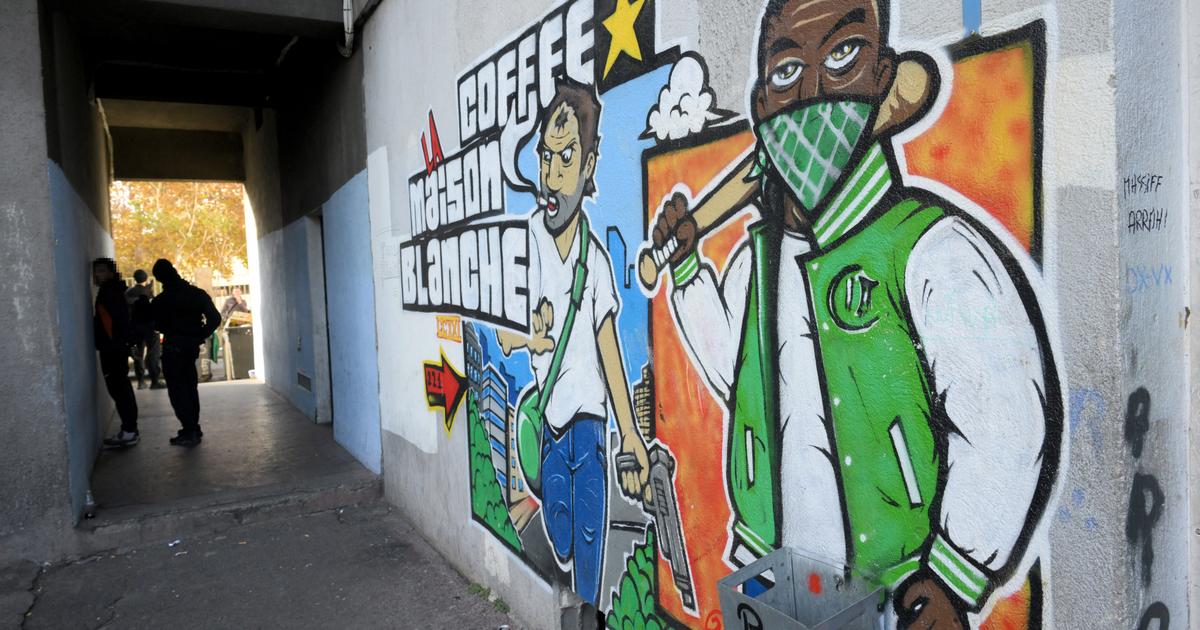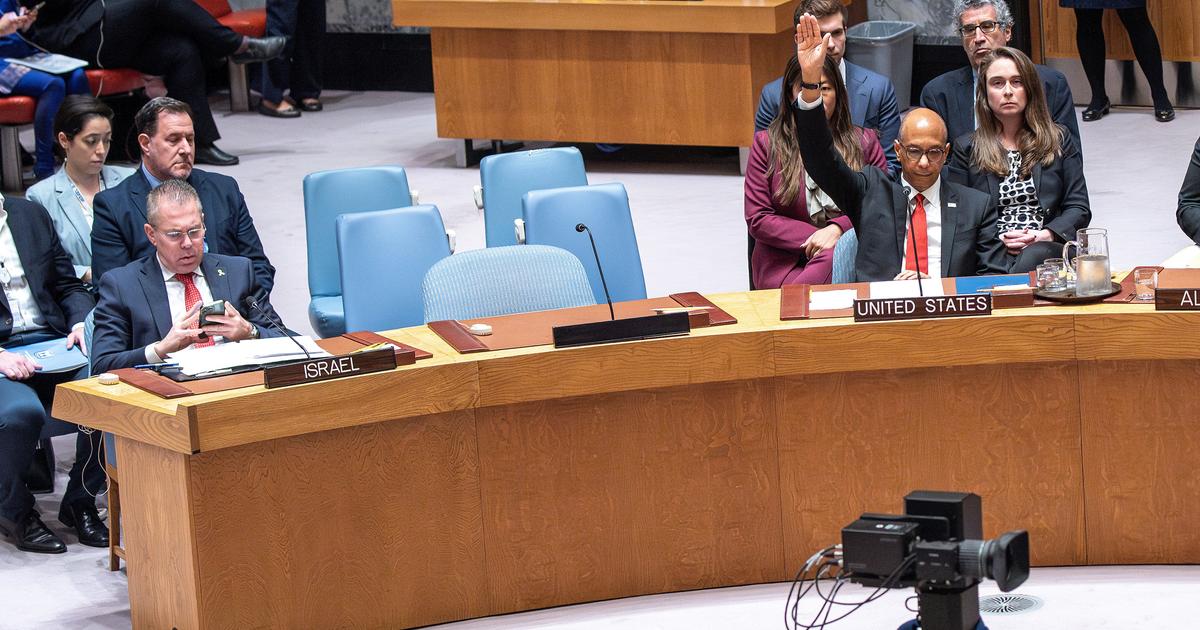Enlarge image
House of the Cosa Nostra hit man Giuseppe Greco: escape stairs to the sea
Photo: Alessio Mamo
The old town of Palermo, mountains and the sea: this is the view from the villas on the back of Monte Gallos on the coast of Sicily. But nobody lives in the houses who can enjoy the view - just birds and rats. A company affiliated with the Mafia boss Michele Greco had built the settlement since the late 1970s. When the authorities stopped the project, 170 villas were already under construction. Today the cemetery of the Mafia villas is called "Pizzo Sella" - "Hill of Shame".
In countries like Italy or Mexico, where criminal organizations have a great influence, mafiosi or cartel bosses help shape the face of cities: They build entire settlements in order to earn money from public contracts or to launder money and build luxurious villas for themselves and their families Status symbols.
Some even have complex underground bunkers and tunnels built to help them smuggle or escape, or to live in.
"Unfortunately, in most southern Italian cities there are traces of Mafia buildings that have changed the character of these places," says Sicilian photographer Alessio Mamo.
He documented the villas and the ruins of the Mafiosi with his camera - and captured how aggressively clans are redesigning public spaces in his homeland.
“Architecture and drug trafficking are inextricably linked,” says the Mexican architect and urban planner Eloy Méndez from the University of Puebla, who is researching “narco architecture” in Mexico.
According to him, real estate investments by criminals are creating new urban landscapes in Latin America;
The representative buildings of the criminals are like "their own language, with which they want to show off and stand out" - often kitschy and excessive.
The Jardines del Humaya cemetery in Culiacán, the cradle of the Sinaloa cartel, is considered a narco cult site: there, criminals and their families compete with huge tombs that are reminiscent of colonial-style temples and palaces - with elements such as onion domes, cornices, vaults, Arches and pillars.
The buildings are also symbols of power, with their presence mafia clans and cartels dominate the public space, control the surrounding area - but governments and civil society are trying to recapture the cities. Italy has confiscated more than 36,000 Mafia properties since 1982. "Confiscation is one of the most effective tools in the fight against organized crime," says Zora Hauser, who conducts research on the mafia at Oxford University - the confiscation of assets disrupts their operations and has a deterrent effect.
"The most effective element, however, is when the assets, companies, land and buildings are returned to society," believes the expert.
"They are the symbol that the state and the people have regained control." With the conversion, exactly what mafiosi fear most: losing control of their territory.
According to the anti-mafia organization Libera, 1,000 Italian communities have received buildings or land confiscated by the state for social purposes - and around 900 non-profit organizations or cooperatives manage former mafia properties.
The GOEL cooperative group in Calabria is also benefiting from the Italian redistribution strategy: it now uses three former mafia buildings - but it has also experienced that mafiosi do not want to give up their property without a fight.
In Calabria, the territory of the globally active, brutal 'Ndrangheta, citizens, farmers and entrepreneurs have come together in the cooperative group to defend themselves against the mafia, against extortion and threats.
GOEL also runs several social enterprises in areas such as organic farming, tourism, eco-fashion or organic cosmetics.
Around 400 employees are thus given economic prospects - in one of the poorest and most corrupt regions in Europe, where the mafia is the largest employer and the state has largely lost control.
A former mafia house houses GOEL workers, in another one employees sew clothes for the eco-fashion label.
Most recently, the huge ex-house of a mafia boss was added, which is transforming the initiative into a hotel.
The city even paid for new furniture and guaranteed ten years of freedom from rent, free water and electricity.
But ten days after GOEL won the tender, Mafia members broke into the house, damaged and stole parts of the building's water system and caused around 50,000 euros in damage.
The anti-mafia initiative is already familiar with such attacks: once mafiosi burned down a farm, destroyed tractors, stocks - since then the team has been fighting back with a party every time.
"When people fall into a depression and give up hope, they can be easily controlled," says Vincenzo Linarello, chairman of the GOEL cooperative group.
"When the 'Ndrangheta attacks us, we respond with festivals that encourage us."
They celebrate, collect donations, and run publicity campaigns to make the actions of the Mafiosi visible.
In the meantime, the threats have receded, says Linarello: "They obviously understood that they make us stronger with every attack."
Other regions are now also being inspired by the Italian model - such as Berlin.
In the German capital, objects confiscated by criminals should also be able to be used for charitable purposes in the future.
In 2018, investigators confiscated 77 properties belonging to the Remmo clan, including apartment buildings and apartments, but also a villa and an allotment garden.
The villa in Alt-Buckow in Neukölln is planned to become a youth center.
But before that, the district administration would first have to push the current tenants out of the villa - family members of the clan.
Mexico will soon be raffling off some properties that have been confiscated by corrupt politicians and drug lords: in mid-September there will be a special drawing in which a house in Culiacán is in the lottery pot, from which Joaquín »El Chapo« Guzmán fled in 2014 - as well as a villa near Mexico City, which belonged to the ex-chief of the Juarez cartel, Amado Carrillo.
For 250 pesos per lot, the equivalent of just under eleven euros, everyone should get the chance to win a Narco house.
The government wants to invest the proceeds of the campaign in a corona vaccination campaign.
The crime expert Edgardo Buscaglia thinks the action is primarily a "show": "They give a few assets back to individual citizens via lottery," says Buscaglia.
In Mexico, however, there was a lack of national strategy and laws that would require judges to redistribute all property confiscated in Mexico to civil society organizations run by victims of organized crime - and whose activities benefit victims.
The returns are »not a gift« - they have to be used to enable victims to reintegrate into work and society.
This contribution is part of the Global Society project
Expand areaWhat is the Global Society project?
Reporters from
Asia, Africa, Latin America and Europe
report under the title “Global Society”
- on injustices in a globalized world, socio-political challenges and sustainable development.
The reports, analyzes, photo series, videos and podcasts appear in the international section of SPIEGEL.
The project is long-term and will be supported for three years by the Bill & Melinda Gates Foundation (BMGF).
A detailed FAQ with questions and answers about the project can be found here.
AreaWhat does the funding look like in concrete terms?
The Bill & Melinda Gates Foundation (BMGF) is supporting the project for three years with a total of around 2.3 million euros.
Are the journalistic content independent of the foundation?
Yes.
The editorial content is created without the influence of the Gates Foundation.
Do other media have similar projects?
Yes.
Big European media like "The Guardian" and "El País" have set up similar sections on their news sites with "Global Development" and "Planeta Futuro" with the support of the Gates Foundation.
Have there already been similar projects at SPIEGEL?
In the past few years, SPIEGEL has already implemented two projects with the European Journalism Center (EJC) and the support of the Bill & Melinda Gates Foundation: the “Expedition ÜberMorgen” on global sustainability goals and the journalistic refugee project “The New Arrivals” within the framework several award-winning multimedia reports on the topics of migration and flight have been produced.
Where can I find all publications on global society?
The pieces can be found at SPIEGEL on the topic Global Society.















